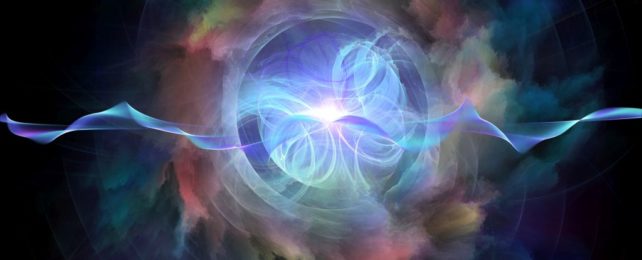A relatively small, dense object cloaked within a cloud of its own exploded remains just a few thousand light-years away is defying our understanding of stellar physics.
By all accounts it seems to be a neutron star, though it's an unusual one at that. At just 77 percent of the mass of the Sun, it's the lowest mass ever measured for an object of its kind.
Previously, the lightest neutron star ever measured clocked in at 1.17 times the mass of the Sun.
This more recent discovery isn't just smaller, it's significantly lower than the minimum neutron star mass predicted by theory. This suggests either there's some gap in our understanding of these ultradense objects… or what we're looking at is not a neutron star at all, but a peculiar, never-before-seen object known as a 'strange' star.
Neutron stars are among the densest objects in the entire Universe. They're what remains after a massive star between about 8 and 30 times the mass of the Sun has reached the end of its life. When the star runs out of material to fuse in its core, it goes supernova, ejecting its outer layers of material into space.
No longer supported by the outward pressure of fusion, the core collapses in on itself to form an object so dense, atomic nuclei squish together and electrons are forced to become intimate with protons long enough for them to transform into neutrons.
Most of these compact objects are around 1.4 times the mass of the Sun, though theory says they could range from something as massive as around 2.3 solar masses, down to just 1.1 solar masses. All of this packed inside a sphere just packed into a sphere just 20 kilometers (12 miles) or so across, making every teaspoonful of neutron star material weigh somewhere between 10 million and several billion tons.
Stars with higher and lower masses than neutron stars can also turn into dense objects. Heavier stars turn into black holes. Lighter stars turn into white dwarfs – less dense than neutron stars, with an upper mass limit of 1.4 solar masses, though still pretty compact. This is the eventual fate of our own Sun.
The neutron star that is the subject of this study is at the center of a supernova remnant called HESS J1731-347, which had previously been calculated to sit more than 10,000 light-years away. One of the difficulties in studying neutron stars, however, lies in poorly constrained distance measurements. Without an accurate distance, it's hard to obtain accurate measurements of the other characteristics of a star.
Recently, a second, optically bright star was discovered lurking in HESS J1731-347. From this, using data from the Gaia mapping survey, a team of astronomers led by Victor Doroshenko of Eberhard Karls University of Tübingen in Germany were able to recalculate the distance to HESS J1731-347, and found it's much closer than thought, at around 8,150 light-years away.
This means that previous estimates of the neutron star's other characteristics needed to be refined, including its mass. Combined with observations of the X-ray light emitted by the neutron star (inconsistent with X-radiation from a white dwarf), Doroshenko and his colleagues were able to refine its radius to 10.4 kilometers, and its mass to an absolutely gobsmackingly low 0.77 solar masses.
This means that it might not actually be a neutron star as we know it, but a hypothetical object not yet positively identified in the wild.
"Our mass estimate makes the central compact object in HESS J1731-347 the lightest neutron star known to date, and potentially a more exotic object – that is, a 'strange star' candidate," the researchers write in their paper.
According to theory, a strange star looks a lot like a neutron star, but contains a larger proportion of fundamental particles called strange quarks. Quarks are fundamental subatomic particles that combine to form composite particles such as protons and neutrons. Quarks come in six different types, or flavors, called up, down, charm, strange, top, and bottom. Protons and neutrons are made of up and down quarks.
Theory suggests that, in the extremely compressed environment inside a neutron star, subatomic particles break down into their constituent quarks. Under this model, strange stars are made of matter consisting of equal proportions of up, down, and strange quarks.
Strange stars should form under masses large enough to really put the squeeze on, but since the rulebook for neutron stars goes out the window when enough quarks get involved, there's essentially no lower limit either. Meaning we can't rule out the possibility this neutron star is in effect a strange star.
This would be extremely cool; physicists have been searching for quark matter and strange quark matter for decades. However, while a strange star is certainly possible, the greater likelihood is that what we're looking at is a neutron star – and that, too, is extremely cool.
"The obtained constraints on mass and radius are still fully consistent with a standard neutron star interpretation and can be used to improve astrophysical constraints on the equation of state of cold dense matter under this assumption," the researchers write.
"Such a light neutron star, regardless of the assumed internal composition, appears to be a very intriguing object from an astrophysical perspective."
It's challenging to ascertain how such a light neutron star could have formed under our current models. So, whatever it is made of, the dense object at the heart of HESS J1731-347 is going to have something to teach us about the mysterious afterlives of massive stars.
The team's research has been published in Nature Astronomy.
